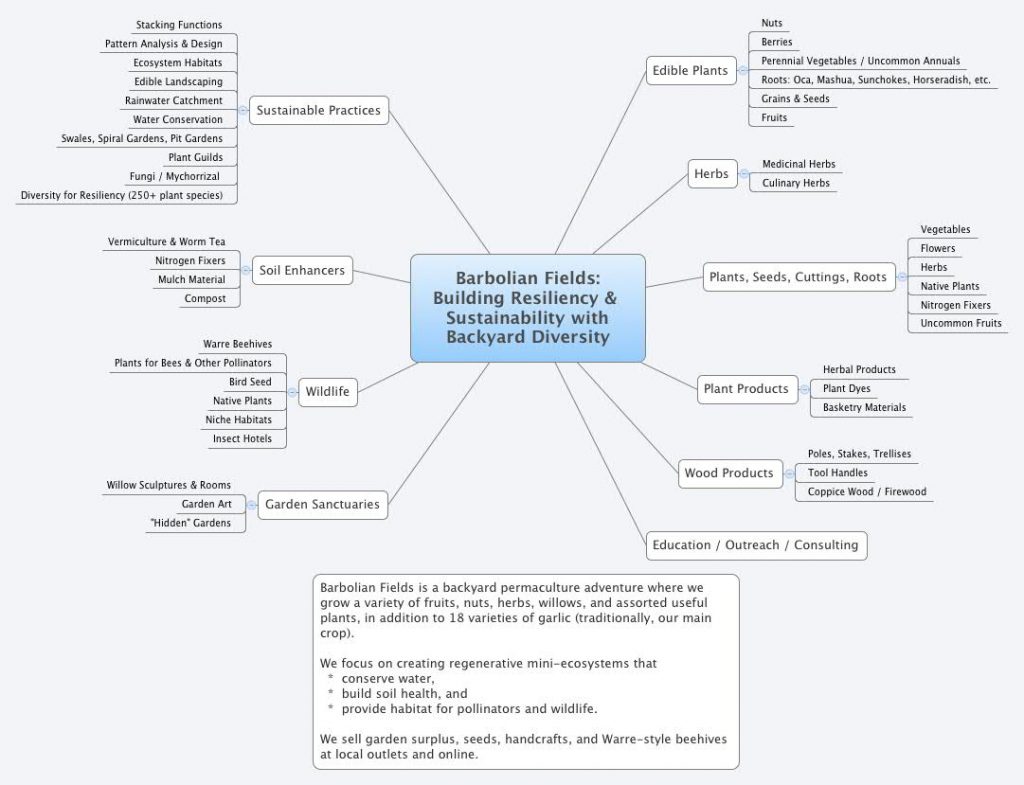Barbolian Fields is a little backyard horticultural experiment located just outside Sequim, Washington, USA. I started this website in 2007 when I was selling a lot of garlic – at one point, over 20 varieties! We no longer grow garlic on a commercial scale; our focus has transitioned more toward a variety of other useful plants (including garlic). If people ask what I grow these days, I say “habitat,” but really, it is so much more. I write about that and backyard ecology. I also share things we make and post photos of our hikes into wild places.
Over time, I shifted from thinking of the garden as a series of beds (monocrops) for my own use, toward wanting to go “beyond organic” and better understand the relationships between plants and the network of animals that depend on them. I learned more about soil science, microbial communities, permaculture, the importance of native plants, and how to build soil health, conserve water, and provide habitat for pollinators and wildlife.
As John Muir once said, “When we try to pick out anything by itself, we find it hitched to everything else in the universe.” (He was not the first to come up with the idea, but I like his way of phrasing it.)
I was trying to get a grip one day on just what it is, exactly, that we do around here – and so I drew out a mindmap (below).
Understand, we are not a huge farm — we have close to 2 acres of land, but we are doing all of this on probably an acre or so. Our property was once part of an old dairy farm. The structures consist of a relatively small house built at the turn of the century and a large shop where the old barn collapsed. We built a small greenhouse. There is still quite a bit of unused pasture, part of which is “lawn” and part that we let grow wild and occasionally scythe for mulch. Within the garden areas, the biomass is incredible! Food for bees, wildlife, and ourselves; fiber plants, medicinals, craft materials, and places to hang out and simply enjoy.
With diversity comes resiliency! Although we are no longer focused on selling all the products listed in the graphic, it is interesting to see how applied sustainable practices have improved the land, supported wildlife, and provided for our needs, as well as given us opportunities for trade and commerce.
My point is – you don’t need a lot of land to do this! As our grandparents and great grandparents will be first to tell us, much can be done with an ethic of simple living, working with what you have toward self-sufficiency and sustainability, minimizing waste, maximizing efficiency, respecting – even revering – the good earth that nourishes us: living in connection. It is very empowering.
It gives me a lot of hope to know that each of us can nurture a small part of the planet and together make a difference.
Thanks for visiting! We always enjoy hearing from others and their experiences!
~ * ~
blythe

